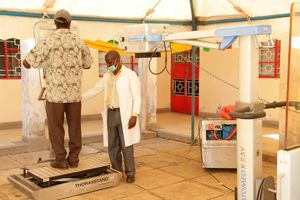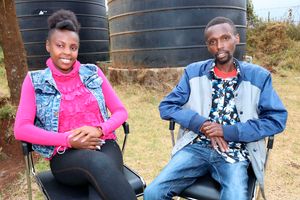Tackling drug-resistant tuberculosis among men

Data from the World Health Organisation shows that Kenya is one of the 22 countries that contribute to about 80 per cent of world TB cases.
It has been one year since Mr Bernard Rotich, 32, was diagnosed with multidrug-resistant tuberculosis (MDR-TB).
It is a type of tuberculosis (TB) whose bacteria can’t be treated using the two main drugs — isoniazid and rifampin. Mr Rotich got his positive result for MDR-TB on the eve of World Tuberculosis Day last year.
“Before my diagnosis, I didn’t imagine that my persistent cough was TB. I had uncomfortable nights and lost my appetite. When I lost a lot of weight, I decided to seek medical attention,” he said.
The first hospital he went to told him that he has a bacterial infection and, for a week, he was on medication to suppress it.
“I didn’t see any changes. I stopped taking the drugs I was given and opted to get a second opinion from a different hospital,” he told Nation.
It is during the second hospital that he was diagnosed with MDR-TB, which often affects people who stop taking TB medication.
Because of the contagious nature of TB, Mr Rotich was isolated in hospital for one month after which he was allowed to go home when his health had stabilised.
In the past 18 months, he has taken medication on a daily basis. Today, people globally are commemorating World TB day and research done by the Light Consortium, a programme under the African Institute for Development Policy (Afidep) shows that men account for more than half of TB cases in the country.
Even as Mr Rotich is now free from the disease, he represents the 56 per cent of men who suffer from the burden of a TB infection.
Women, on the other hand, account for 32 per cent of infections while children represent 11 per cent of TB cases.
“It was tough for me as a family man to manage the disease and be on the lookout not to infect my kin. I can imagine the toll it has on family men living in a single room and financially incapacitated. You need money for food and supplements,” he says.
Kenya's position
Data from the World Health Organisation shows that Kenya is one of the 22 countries that contribute to about 80 per cent of world TB cases. It ranks 15 out of the 22 most vulnerable countries globally. Dr Leyla Abdullahi, Senior Research and Policy Analyst at Afidep, told Nation the gender disparity in TB cases highlights an important challenge for its prevention and care.
The Light programme now brings on board everyone, especially men who are disproportionately affected, so as to stamp out TB by 2030 as per World Health Organisation projections.
Dr Abdullahi tells Nation the societal role of men being providers makes them prioritise their families even when they are sick.
“Social and behavioural factors likely account for most of these gender differences. Smoking, hazardous alcohol consumption, imprisonment and employment in mines are risk factors,” she explained.
Even as the country is hoping to eliminate tuberculosis, Dr Abdullahi faults most TB interventions that do not keep men at the centre. She says gender has an impact on disease transmission, testing, treatment, adherence and outcome.
“Sufficient and consistent funding will be key to ensuring consistent and better TB services are available to everyone. This will require strong political will and commitment from the government and development partners,” Dr Abdullahi said. Mr Rotich urged TB patients to adhere to their treatment regimen.





